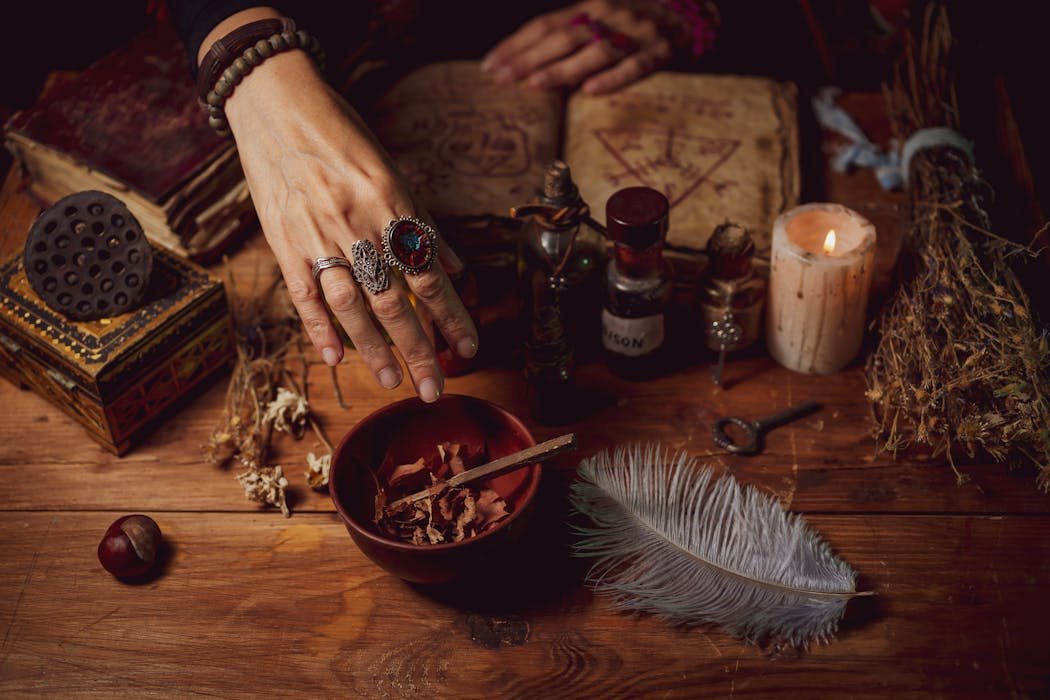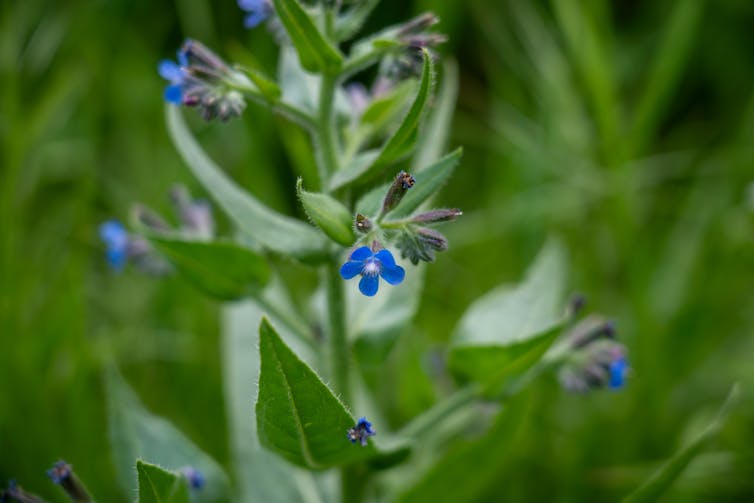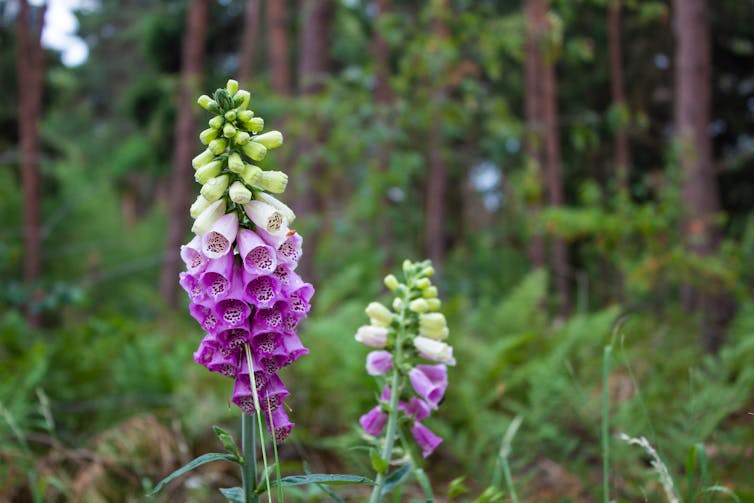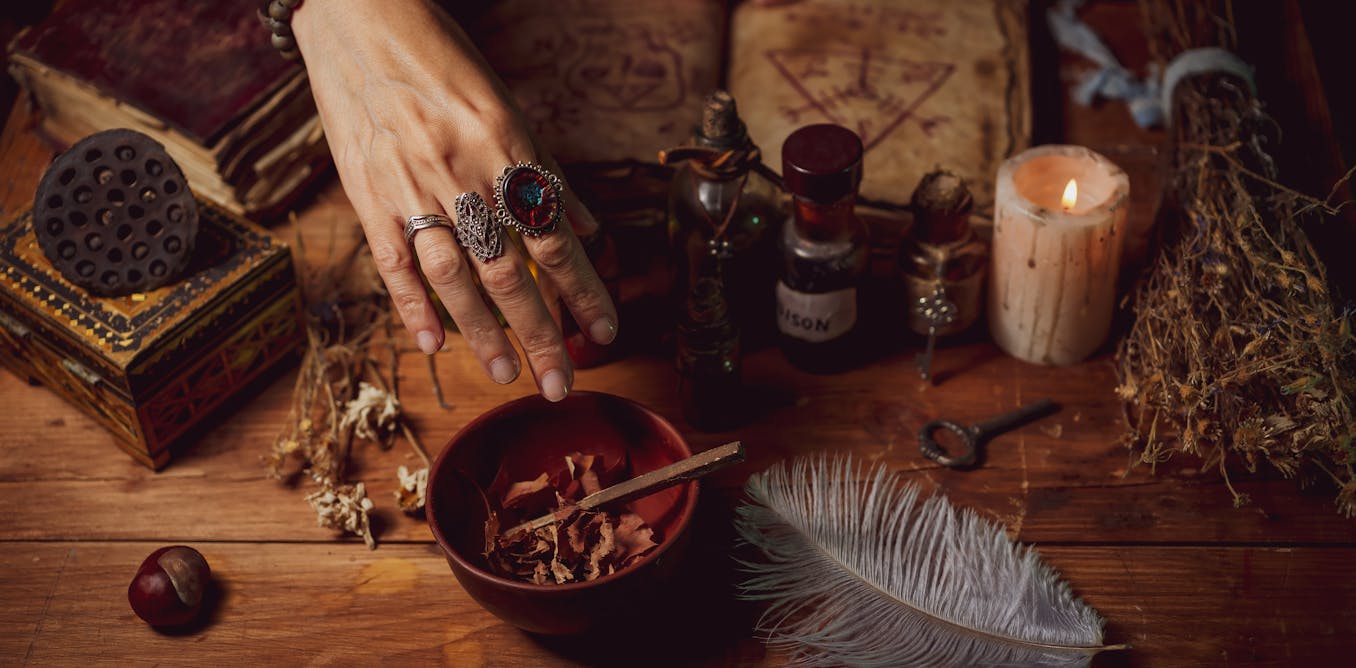
“Hubble bubble toil and trouble” is a quote from Shakespeare’s Macbeth that conjures images of evil witches making potions in giant cauldrons. But the truth was that women persecuted as witches were probably legitimate healers of the time.
Prior to the 14th century, women healers were generally tolerated throughout Europe, offering one of the only kinds of medicine available at the time. But from the 14th to the mid-18th century, with the rise of university education, coupled with the increasing power of the church, women healers were often demonised.
University graduates were favoured instead. Women folk healers were now commonly labelled as “witches” and subjected to torture and execution.
Valuable medicinal knowledge may have gotten lost along the way. To rediscover this ancient knowledge, researchers are looking in more detail at some of the major ingredients used in these medicines and assess their scientific worth through a modern lens.
Some of the most famous potions documented in records of medieval treatments were said to contain exotic ingredients such as eye of newt, toe of frog, wool of bat, tongue of dog and adder’s fork. But these were actually synonyms for plants and not animal parts.
Although, animal parts such as frogs and toads were indeed also used in other recipes used by the healers of the time, often for their psychoactive properties.
The majority of the plants folk healers used were native to Europe. But there were also some exotic ingredients, obtained through the spice trade, which began as early as the fifth century.
Eye of newt is mustard seed, most likely the European species Sinapis alba. Modern research has shown it has anti-cough, anti-asthma, anti-inflammatory, anti-nerve damage, anti-androgenic, cardioprotective and anti-tumour effects.
The classical formulations containing dried mustard seed, handed down from ancient medical books or ethnic medical experience, are now widely used in herbal clinics.
Wool of bat is common holly leaves, and has been shown to reduce high levels of fats in the blood, including high cholesterol. It also contains some compounds that are toxic and so self-medication isn’t recommended.
Tongue of dog is actually a plant known as hound’s tongue, attributed to the long leaf shape. It has a history of use across the world for a variety of ailments including malaria, hepatitis and tuberculosis.
The presence of group of natural compounds called pyrrolizidine alkaloids render it highly toxic to the liver. This means that any research showing medicinal promise has to be viewed with some caution.

Giulumian/Shutterstock
Adder’s fork refers most likely to the fern, English adder’s tongue, primarily used in folk medicine for wound healing and for promoting healthy blood circulation. It has also been exploited for its skin-enhancing properties by the cosmetic industry.
Witches’ brews
Witchcraft and folk healing are two different arts. However, medieval folk healing did involve elements of superstition, astrological lore and even pagan ritual and so the line between compassionate healer and witch could easily be misrepresented by those in power.
Flight ointments, sleep potions and love potions are often mentioned both in historical records and fictional literature. Commonly containing a potent class of chemical compounds called tropane alkaloids (a class that also includes cocaine), these concoctions would have had some interesting effects.
Flight ointments were applied to a broomstick and to parts of the body with blood vessels close to the surface to aid absorption. There has been much colourful debate as to the exact parts of the body that these ointments were applied to, but the extremities are most frequently mentioned.
This could be viewed as an early form of transdermal application, now found in the delivery of some drugs such as nicotine patches.
These alkaloids, derived from plants of the Solanaceae (potato) family, including deadly nightshade and henbane have intoxicating psychoactive effects, including feelings of lightness, delirium and hallucinations. These effects could easily be experienced as feelings of flying.
Sleep potions often used extracts from foxglove and extracts from the plant Indian snakeroot, containing the drug reserpine, the world’s first drug treatment for high blood pressure. It was reportedly rediscovered after the founder of the Indian herbal medicine company, Himalaya, observed its calming effects on restless elephants during a trip to Burma in the 1930s, hundreds of years after its use in medieval times.

backcornermedia/Shutterstock
Together these plants and their compounds produce symptoms such as reduced heartbeat, inhibition of adrenaline release and drowsiness, all things that might aid in a restful night’s sleep.
Love potion recipes called for ingredients such as the mandrake plant Mandragora officinalis. The root is a rich source of the same alkaloids found in the sleep potions.
This may appear counter-intuitive but higher doses of these compounds are known to produce increased heartbeat, palpitations and sweating rather than drowsiness. Other plants such as Ephedra sinica (containing a stimulant called ephedrine) and psychoactive Areca catechu (betel nut) have stimulant and euphoric effects linked to increases in adrenaline and serotonin.
A sleep potion can be transformed into a love potion, and should love turn to hate, a further increase in dosage would transform these plants into poisons. So it’s unsurprising that accusations associated with poisoning and witchcraft were more commonplace during the heightened witch hunts of the 16th and 17th centuries as a means to prosecute women healers under the law.
Prosecutions for witchcraft didn’t come to an end in England until the early 18th century when the 1736 witchcraft act repealed earlier legislation and made it a crime to either pretend to be a witch or to accuse someone of practising witchcraft.
Following the 1736 act, the witches (and folk healers) were left alone for a while although still encountered difficulties from the church and establishment at times. Nonetheless the act of prescribing potions continued.
The practice of prescribing herbal pills, potions and salves as a herbal medicine practitioner eventually became a legitimate occupation. It’s one still dominated by women to this day.
![]()
Anthony Booker is affiliated with The British Pharmacopoeia, The Medicines and Healthcare Products Regulatory Agency, The American Botanical Council, The British Herbal Medicine Association and The European Scientific Cooperative on Phytotherapy.



